Sinem Guven
Sparse Depth Completion with Semantic Mesh Deformation Optimization
Dec 10, 2021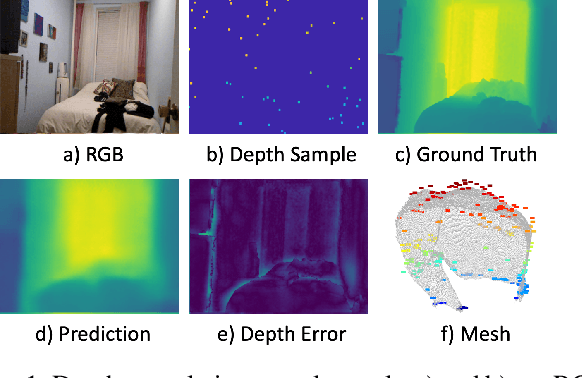
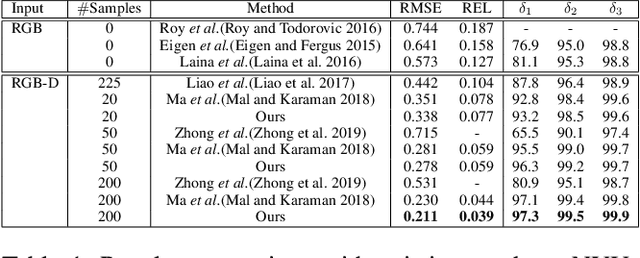

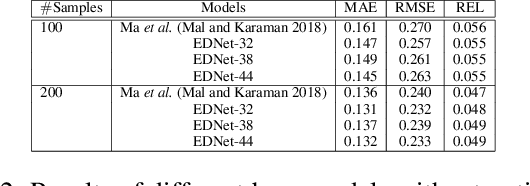
Abstract:Sparse depth measurements are widely available in many applications such as augmented reality, visual inertial odometry and robots equipped with low cost depth sensors. Although such sparse depth samples work well for certain applications like motion tracking, a complete depth map is usually preferred for broader applications, such as 3D object recognition, 3D reconstruction and autonomous driving. Despite the recent advancements in depth prediction from single RGB images with deeper neural networks, the existing approaches do not yield reliable results for practical use. In this work, we propose a neural network with post-optimization, which takes an RGB image and sparse depth samples as input and predicts the complete depth map. We make three major contributions to advance the state-of-the-art: an improved backbone network architecture named EDNet, a semantic edge-weighted loss function and a semantic mesh deformation optimization method. Our evaluation results outperform the existing work consistently on both indoor and outdoor datasets, and it significantly reduces the mean average error by up to 19.5% under the same settings of 200 sparse samples on NYU-Depth-V2 dataset.
Technical Question Answering across Tasks and Domains
Oct 19, 2020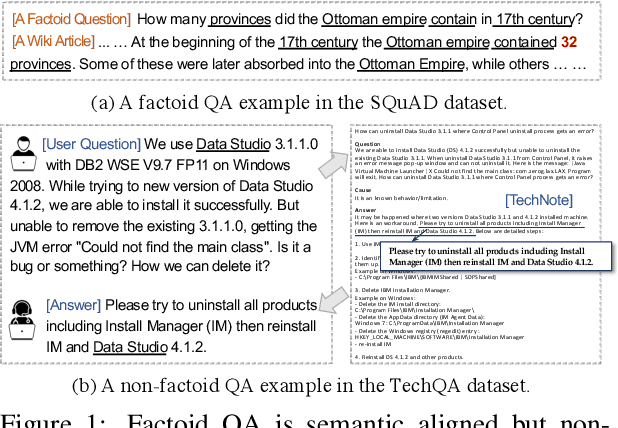
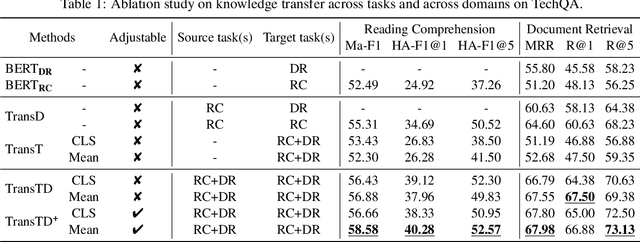
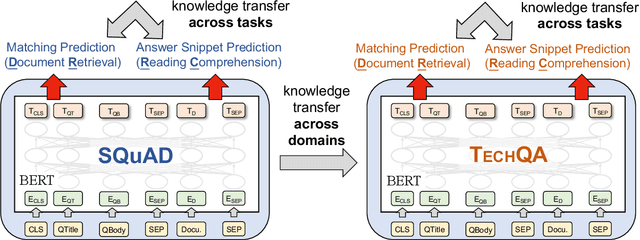

Abstract:Building automatic technical support system is an important yet challenge task. Conceptually, to answer a user question on a technical forum, a human expert has to first retrieve relevant documents, and then read them carefully to identify the answer snippet. Despite huge success the researchers have achieved in coping with general domain question answering (QA), much less attentions have been paid for investigating technical QA. Specifically, existing methods suffer from several unique challenges (i) the question and answer rarely overlaps substantially and (ii) very limited data size. In this paper, we propose a novel framework of deep transfer learning to effectively address technical QA across tasks and domains. To this end, we present an adjustable joint learning approach for document retrieval and reading comprehension tasks. Our experiments on the TechQA demonstrates superior performance compared with state-of-the-art methods.
 Add to Chrome
Add to Chrome Add to Firefox
Add to Firefox Add to Edge
Add to Edge